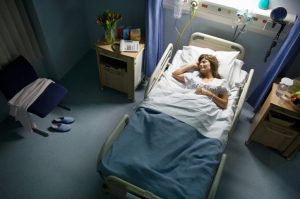This website uses cookies so that we can provide you with the best user experience possible. Cookie information is stored in your browser and performs functions such as recognising you when you return to our website and helping our team to understand which sections of the website you find most interesting and useful.

Susan E. Mazer, Ph.D. Blog
Thoughts and ideas on healthcare
Hi, and welcome to my blog! I'm Susan E. Mazer -- a knowledge expert and thought leader on how the environment of care impacts the patient experience. Topics I write about include safety, satisfaction, hospital noise, nursing, care at the bedside, and much more.
Good Sounds, Bad Sounds: What Matters for Hospital Noise
June 28, 2013
 You may have seen the article in the Wall St. Journal a couple of weeks ago on hospital noise. Instead of focusing on sounds that are too loud, annoying, and most distracting to patients as most stories in the general press do, it looked at “good” sounds.
You may have seen the article in the Wall St. Journal a couple of weeks ago on hospital noise. Instead of focusing on sounds that are too loud, annoying, and most distracting to patients as most stories in the general press do, it looked at “good” sounds.
But I think there is a bigger issue than what are good and bad sounds in hospitals.
Florence Nightingale wrote in 1869 that “any sound that causes expectation, anticipation, fear of surprise…it damages the the patient.” She included “waiting” as a clear struggle for patients to deal with, whether waiting to see a nurse, for a meal, news of a diagnosis, or the morning light.
Today, nearly all the studies on hospital noise are generic; the plans to reduce noise in hospitals are mechanical; and the outcomes are not successful.
The issues that plague patients regarding the auditory environment at the hospital center on annoying distraction, such as hearing or overhearing the business or suffering of other patients. None of these distractions are characterized solely by volume levels. Rather they are defined within the context of the patient experience, a point that was completely missed by the reporter who wrote the Wall St. Journal article.
Without a doubt, organizational culture is the white elephant in the room.
Gary Maderas of Making Hospitals Quiet, who is quoted in the WSJ article, is doing substantive work in noise assessment and reduction. But often, noise control engineers are the first to be written out of a healthcare building project budget. Despite that, many new or renovated hospitals do offer some solutions for acoustic outcomes. But it is hardly enough.
To really look at this problem, we need to ask ourselves the following questions:
When you enter your hospital, what do you hear?
When you walk through the corridors, what do you hear?
When you are in a patient’s room, what do you hear?
Are any of these sounds appropriate to recovery and a healing environment?










